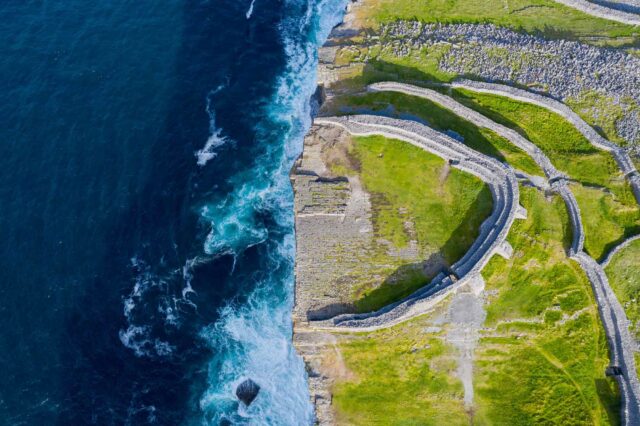Rathcroghan Visitor Centre Highlights (7)
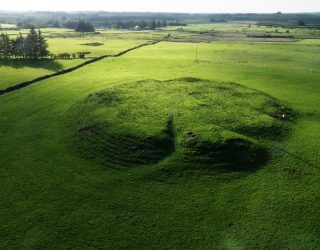
Rathcroghan Mound
The focal point of the Rathcroghan Archaeological Landscape is Rathcroghan Mound, a multi-period monument perched on the summit of the great limestone plateau which characterises this area. A series of non-invasive archaeological surveys applied to this impressive monument have uncovered the possibility of millennia of use, and suggest that Rathcroghan Mound and its immediate surrounds once served as a celebrated centre of ritual and ceremonial activity in late Iron Age and early medieval Connacht, perhaps with origins reaching back into deep prehistory.
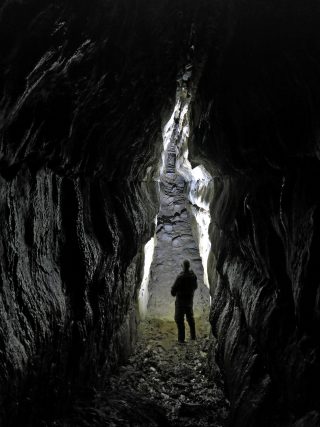
Oweynagat Cave
No visit to Rathcroghan is complete without acquainting yourself with Uaimh na gCat – The Cave of the Cats. Reputed to be one of the principal portals into the Irish Otherworld, this extensive limestone cavern was venerated by the communities who resided at Rathcroghan in the early medieval period, to such a degree that they constructed a formal entrance and passageway to provide access into this geological phenomenon. Ogham inscriptions are to be found within the passage entrance, while the early medieval literary sources are replete with tales which concern the cave. These are particularly associated with the ancient seasonal festival of Samhain, the modern Halloween.
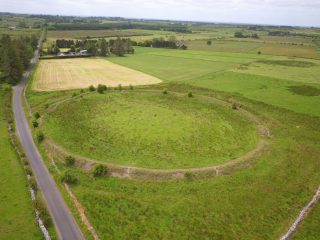
Barrows and Ringforts
One of the indicators that Rathcroghan was and is one of the most important and uniquely preserved archaeological landscapes in Ireland corresponds with the large numbers of, primarily earthen, monuments which are still evident in the fields around Rathcroghan Mound. Dozens of Bronze and Iron Age burial mounds, such as Rathbeg, Caran Fort, Daithí’s Mound, Rathscreg, Carnakit and others, attest to this place being described as a ‘Cemetery of Kings’, while medieval elite settlement sites, chief among them Rathmore, Rathnadarve, Relignaree and Cashelmanannan, confirm Rathcroghan as a place of extraordinary importance throughout the millennia.
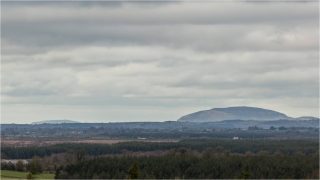
The Vista
Making the short climb up to the summit of Rathcroghan Mound, the highest point of the immediate area, affords the visitor the opportunity to visually explore the far off corners of the ancient territory of Connacht and beyond. From this low rise, a clear day provides views as far west as Croagh Patrick, then following the northern range to the Sligo Mountains, to the Bricklieves, the Curlews, and then to Sliabh an Iarainn, while the eastern limits of this region are marked by Sliabh Bawn to the east. The views to the south are dominated by the wide open plains which served as the wealth of this area in times past. To ascend Rathcroghan Mound enables the visitor to observe Connacht itself!
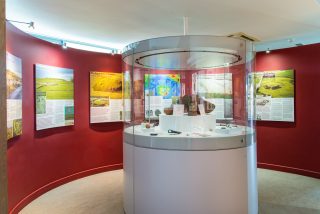
The Museum
Essential to anyone wishing to be introduced to Rathcroghan is a visit to the award-winning museum at Rathcroghan Visitor Centre in Tulsk village. With a collection of local-provenance artefacts on loan from the National Museum of Ireland, two audio-visual presentations, replica figures, information panels and reproductions of some of the sites and scenes to be explored at Rathcroghan, a museum visit enables you to delve into the world that was Iron Age Connacht.

The Tour
After getting your grounding in all things Rathcroghan in the museum, the perfect way to delve deeper into the story of Rathcroghan is provided by the guided sites tour. Operated by the team at Rathcroghan Visitor Centre, the expertly-led tour, provided by one of our archaeologist guides, merges the archaeological and mythological narratives of Rathcroghan in order to gain understanding of this multifaceted landscape, replete with legendary palaces, prehistoric temples, and portals into the enigmatic Irish Otherworld.
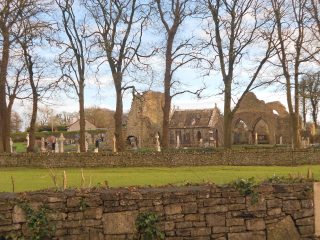
Medieval Tulsk and Ogulla
Rathcroghan Visitor Centre is located within the village of Tulsk, which itself presents an interesting and varied history. You can visit a Patrician holy well at nearby Ogulla, explore the ruins of a fifteenth-century Dominican Priory, and observe the hillock which was once crowned by a tower house castle, the late medieval lordly centre of a branch the Gaelic royal dynasty of the Uí Chonchobair (O’Conor), kings of Connacht.
